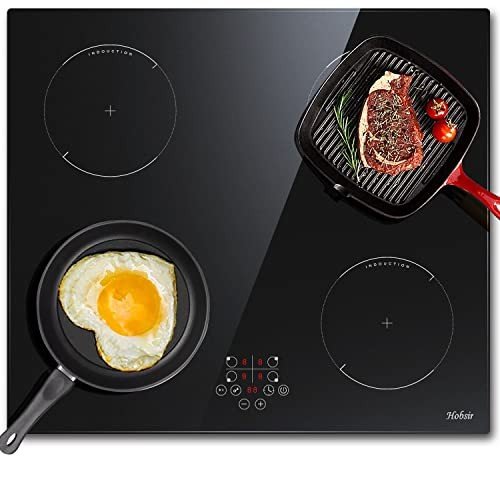The Essential Guide to Oven Hobs: Selecting the Right One for Your Kitchen
When it comes to home cooking, few home appliances are as essential as the oven hob. This versatile tool is essential for a variety of cooking techniques-- boiling, frying, simmering, and sautéing. Offered the myriad of alternatives offered on the market, choosing the perfect oven hob for one's kitchen can be daunting. This short article intends to provide a thorough take a look at oven hobs, discussing their types, performances, benefits, disadvantages, and essential considerations when buying one.
Understanding Oven Hobs
Oven hobs, commonly referred to as cooktops, are flat cooking platforms that include burners or heating elements. They can be integrated with an oven or stand-alone. The option of an oven hob can significantly impact cooking effectiveness and convenience.
Types of Oven Hobs
Oven hobs can be found in various types, each with unique features. Below are the most common types available:
| Type | Description | Advantages | Drawbacks |
|---|---|---|---|
| Gas Hobs | Utilizes gas or propane | Immediate heat and precise temperature level control; works well with all pots and pans | Requires a gas connection; less energy-efficient than electric |
| Electric Hobs | Usage electric coils or radiant heat | Easy to clean; constant heat circulation | Slower to warm up; can be less responsive than gas |
| Induction Hobs | Utilizes electromagnetic fields to heat cookware straight | Fast cooking; energy-efficient; simple to tidy | Requires compatible pots and pans; generally more expensive |
| Ceramic Hobs | Flat glass-ceramic surface area with radiant heat | Visually pleasing; simple to clean | Can be prone to scratching; slower to heat than induction |
Key Features of Oven Hobs
When selecting an oven hob, numerous features must be taken into consideration:
- Size & & Configuration: Available in numerous sizes, oven hobs can accommodate several pots and pans. Standard choices are normally 30, 36, or 48 inches broad.
- Power Output: Look for hobs with differing power levels for different cooking processes. High-powered burners are outstanding for boiling, while lower-power ones can be utilized for simmering.
- Control Types: Choose in between knob controls and touch controls. Knobs provide tactile feedback, while touch controls provide streamlined designs and extra performances.
- Security Features: Options like automatic shut-off, kid locks, and flame failure gadgets are important for preventing mishaps.
- Reduce of Cleaning: Choose models with smooth surface areas or detachable parts for simple maintenance.
Advantages and Disadvantages
Understanding the benefits and drawbacks of different oven hobs can help in making an informed decision.
Benefits
- Flexibility: Suitable for various cooking techniques, from boiling to frying.
- Speed: Many hobs heat rapidly, specifically induction designs.
- Energy Efficiency: Some choices, like induction hobs, can lower energy intake compared to standard techniques.
Disadvantages
- Cost: High-end models, especially induction hobs, can be pricey.
- Installation: Gas hobs require professional installation and a gas supply, which might incur additional costs.
- Compatibility: Not all pots and pans deals with induction hobs, demanding additional purchases.
Buying Considerations
When choosing an oven hob, think about the following elements:
- Cooking Style: Assess how often and what type of cooking you do to identify the best hob type.
- Kitchen Layout: Measure your kitchen area to make sure the hob fits and matches other devices.
- Spending plan: Determine just how much you want to invest. Consider installation and the expense of any essential pots and pans.
- Energy Source: Evaluate the availability of natural gas or the electrical capacity of your kitchen to decide in between gas and electric options.
FAQs About Oven Hobs
Q1: What is the distinction in between a cooktop and an oven hob?A cooktop and an oven hob generally refer to the exact same appliance. However,"cooktop "is a wider term that includes both standalone hobs and integrated systems with ovens. Q2: Can I utilize any pots and pans on an induction
hob?No, induction hobs need ferrous( magnetic)pots and pans
to work. Hobs Sale and pans made from product like stainless-steel or cast iron appropriates, while aluminum and copper without magnetic residential or commercial properties are not. Q3: How do I tidy my oven hob properly?Cleaning methods depend on the type of hob.
Normally, a damp cloth and mild cleaning agent work for glass-ceramic surfaces, while a specific hob cleaner is ideal for induction. Gas hobs require taking apart burners for comprehensive cleansing. Q4: Are induction hobs safe for cooking?Yes, induction hobs are usually safer than gas hobs as they do not produce an open flame,and the surface area cools off quickly. Most models likewise feature child security locks. Q5: How often should I change my oven hob?The life expectancy of an oven hob differs based on the type and usage. Generally, they last around 10 to 15 years.
Routine maintenance can assist extend this period. Picking the perfect oven hob for your home can considerably boost your cooking experience. With a thorough understanding of the types, features, advantages, and considerations, anyone can make an educated choice. From the high heat of gas to the efficiency of induction, there is a hob matched to every cooking need. Eventually, the right oven hob can transform cooking from an ordinary task into an art kind, allowing cooking enthusiasts to develop scrumptious meals with ease.

